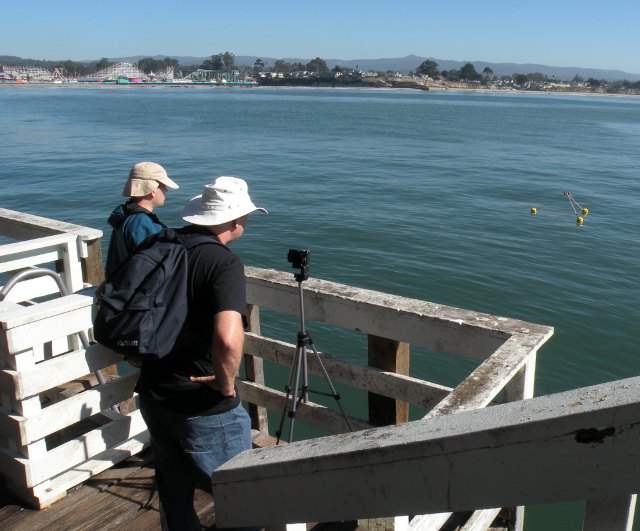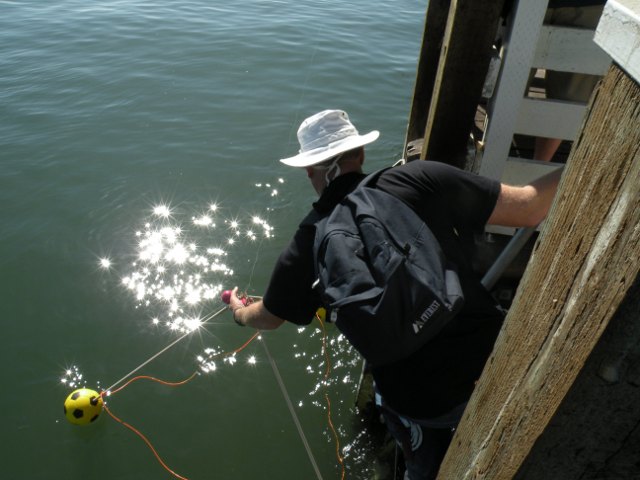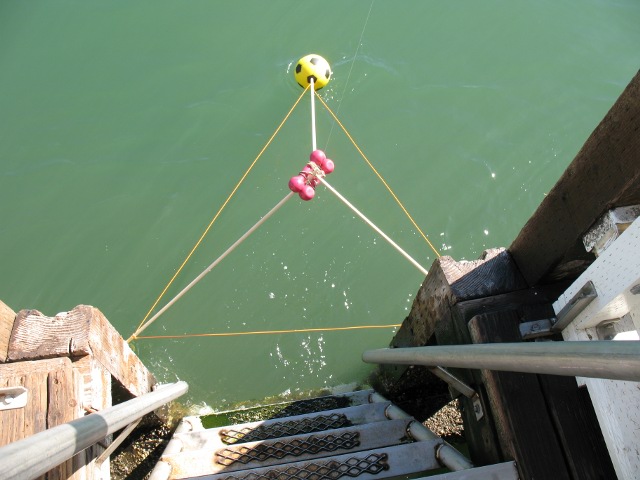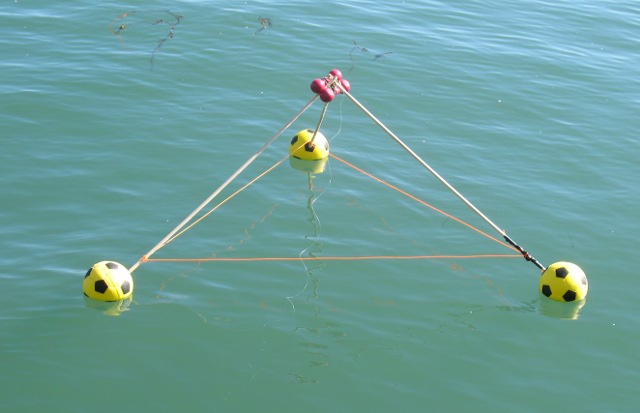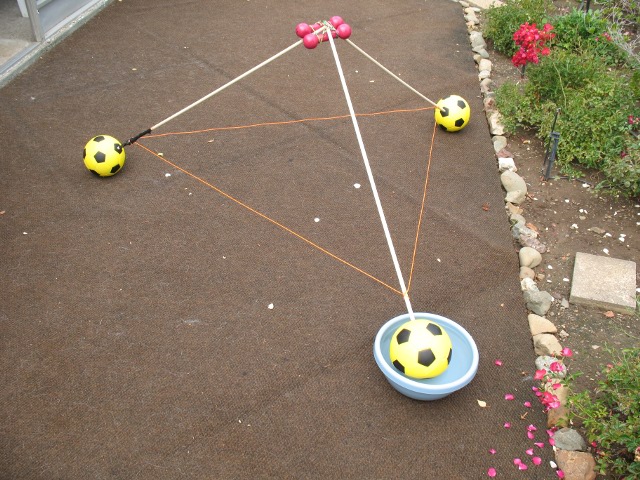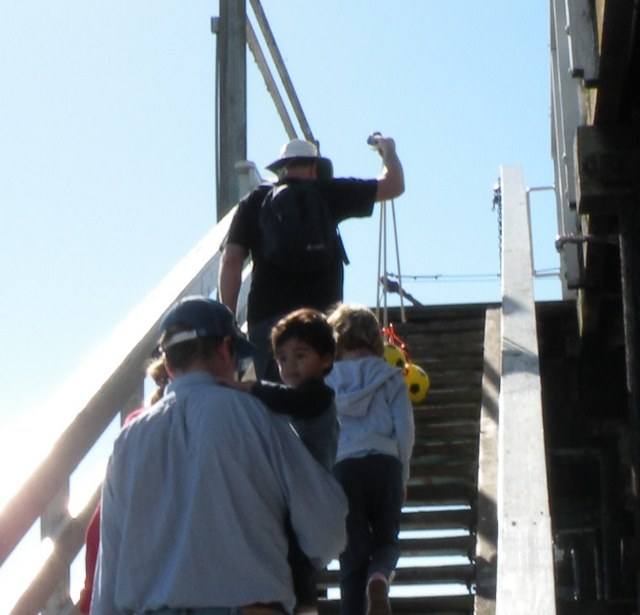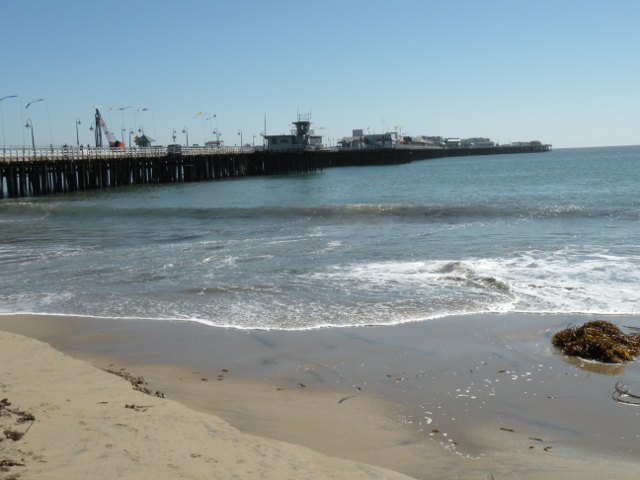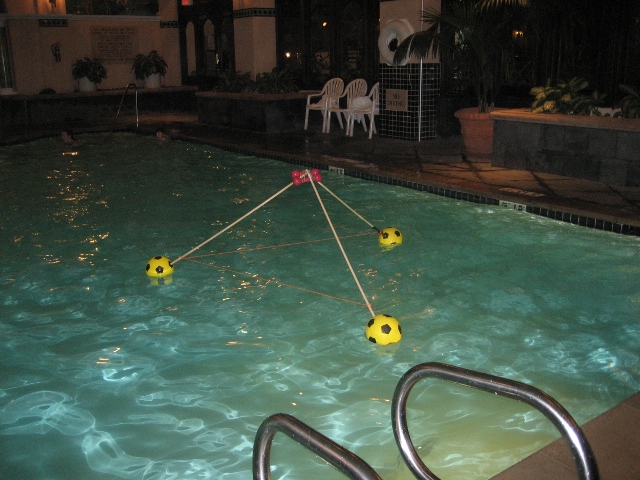Difference between revisions of "User:Vincecate/WaterWalker"
(→Gazebos above the balls) |
(→Video shot in Island Harbor Anguilla) |
||
| (40 intermediate revisions by the same user not shown) | |||
| Line 23: | Line 23: | ||
We can have stairs going down to each of the balls. On top of the ball there can be a column with a big umbrella that opens up. There can also be a floor that opens down. The railing could always stay there. So when things were opened up it would be like a Gazebo. Would let me, or the kids, get out of the main house. It would be a nice place to fish from. Can have hammocks hung between the railing. In the closed position they would be safe from storms. | We can have stairs going down to each of the balls. On top of the ball there can be a column with a big umbrella that opens up. There can also be a floor that opens down. The railing could always stay there. So when things were opened up it would be like a Gazebo. Would let me, or the kids, get out of the main house. It would be a nice place to fish from. Can have hammocks hung between the railing. In the closed position they would be safe from storms. | ||
| − | == | + | == Tilable == |
| − | The floats could be [http://www.seaward.com/products/marine_fenders/seacushion/index.html marine fenders used for large ships]. Then you could tie WaterWalkers next | + | The floats could be made like [http://www.seaward.com/products/marine_fenders/seacushion/index.html marine fenders used for large ships]. Then you could tie WaterWalkers next together and they could [[FractalTiling|tile]] like triangles tile. Could use 6 ropes to connect two seasteads together. Go from the top of one ball to the bottom of the ball touching it (4 ropes). As angle changes between the seasteads the ropes do not need to get longer or shorter. Also, as one seastead wants to go up it will lift the other. Then 2 ropes to connect balls to far ball, to keep seasteads from moving sideways relative to each other. Should work even with waves. Helps that there is not much weight at the edges. |
| + | |||
| + | If there was too much compression force between seasteads a tripod will lift up. Energy is force times distance. The force is lifting the main house up and it can do this for a long distance (compared to just a ship fender alone) before the tripod becomes unstable. So the compression energy this can absorb without damage is very large. | ||
| + | |||
| + | The cables would have to be strong enough that there could never be too much tension force. This might put some limit on the number of seasteads that could be put together in one group, but it should be sizable. | ||
| + | |||
| + | It might make sense to make a triangular shaped float/fender instead of a ball shaped one. Or maybe flatten out the two sides that will be touching other WaterWalkers a bit. But I think a ball should work well. | ||
== Requirements Analysis == | == Requirements Analysis == | ||
| Line 69: | Line 75: | ||
The balls are a bit over 6 inches, so over 12.5 feet in full scale. In the videos below the wind driven waves are around 6 inches, so around 12.5 feet in full scale. There is also a swell from far away which can go up and down a couple feet. | The balls are a bit over 6 inches, so over 12.5 feet in full scale. In the videos below the wind driven waves are around 6 inches, so around 12.5 feet in full scale. There is also a swell from far away which can go up and down a couple feet. | ||
| + | |||
| + | ===Video shot in Santa Cruz California=== | ||
These videos are slowed by 4 but should really be slowed by 5 since 1:25 scale. | These videos are slowed by 4 but should really be slowed by 5 since 1:25 scale. | ||
| Line 83: | Line 91: | ||
Shot from the top of the pier at the end of the pier. | Shot from the top of the pier at the end of the pier. | ||
| + | |||
| + | ===Video shot in Island Harbor Anguilla=== | ||
| + | |||
| + | This model has 5 lbs on it and 5/8 inch dowels. Waves are a bit under 1 foot, so simulating a bit less than 25 foot waves. This video was shot with my new (Nov 12, 2008) Casio EX-FH20 camera that can shoot at 210 frames-per-second. So the slow motion should be smooth. I need to update the firmware on the camera to get it really smooth though. This 210 fps also means that the video is slowed by a factor of 7 and not the factor of 5 that is right for 1:25 scale models. These videos have a "watch in high quality" option if you click on the video and go to youtube. | ||
| + | |||
| + | |||
| + | <youtube v="dSojBqz_Mq8" /> | ||
| + | |||
| + | |||
| + | |||
| + | <youtube v="dqC0iGUJT2E" /> | ||
| + | |||
| + | |||
| + | |||
| + | |||
| + | <youtube v="XYrcK_tmqxQ" /> | ||
| + | |||
| + | With no weights there is not enough tension on the strings. | ||
| + | |||
| + | |||
| + | |||
| + | <youtube v="lVlwTMkwwBE" /> | ||
| + | |||
| + | The balls are waterlogged here so low in the water and with more inertia. Sometimes the strings go slack a bit. | ||
| + | |||
| + | |||
| + | |||
| + | |||
| + | <youtube v="GFWUpXyQ6us" /> | ||
| + | |||
| + | A waterlogged ball rides the waves like the BallHouse model. | ||
==Aquaculture== | ==Aquaculture== | ||
| Line 114: | Line 153: | ||
Probably will try replacing the balls with PCV pipes tied to the dowels. So the tripod would be partly underwater. The PVC pipes could move some with the waves, a bit like the MultiSpar. This would give us a smaller waterline area and so waves should not move it as quickly. Would also use a large rope around the base of the tripod to reduce heave. Probably do this by the end of November. I think this will be the most stable seastead model so far. | Probably will try replacing the balls with PCV pipes tied to the dowels. So the tripod would be partly underwater. The PVC pipes could move some with the waves, a bit like the MultiSpar. This would give us a smaller waterline area and so waves should not move it as quickly. Would also use a large rope around the base of the tripod to reduce heave. Probably do this by the end of November. I think this will be the most stable seastead model so far. | ||
| − | ==Prototype designs == | + | ==Larger models or Prototype designs == |
| − | I think 3 telephone poles could be used to make a good sized prototype. | + | I am working on a [[User:Vincecate/WaterWalker2|1:5 scale model]] that will hold two people. |
| + | |||
| + | I think 3 telephone poles could be used to make a good sized prototype. Lots of [http://www.ldm.com online info about utility poles]. I may be able to get some used | ||
| + | poles cheap. With 3 of the [http://www.polyformus.com/doc/product_a7.htm large A-7 buoy] | ||
| + | I would have enough flotation for [http://www.ldm.com/weight_table_DF_PA_060.htm weight of some length pole]. There are [http://www.valmont.com/valmont-newmark/comparisons.asp steal utility poles that are about half the weight]. The [http://www.valmont.com/valmont-newmark/ansi.asp horizontal loads that different class poles held at the other end can take] are impressive. There are used utility poles cost $2/foot in Anguilla. I will be going down to see what sizes/lengths they have available. | ||
One possible way to make the big balls is to start with a [http://www.complexplastics.com/gigaball/INDEX.HTM big inflatable ball]. We put the end of the telephone pole inside this ball. Then attach a bunch of pieces of fishing net to the pole [http://www.alibaba.com/showroom/U_Shaped_Nail.html with U shaped nails] and to the inside of the ball with tape. Then we fill the ball with foam. Once the foam has hardened the fishnet should hold the foam and the pole together. There are strong foams and we would use one of those. Could put some fiberglass/resin over this, or wire-mesh and cement. | One possible way to make the big balls is to start with a [http://www.complexplastics.com/gigaball/INDEX.HTM big inflatable ball]. We put the end of the telephone pole inside this ball. Then attach a bunch of pieces of fishing net to the pole [http://www.alibaba.com/showroom/U_Shaped_Nail.html with U shaped nails] and to the inside of the ball with tape. Then we fill the ball with foam. Once the foam has hardened the fishnet should hold the foam and the pole together. There are strong foams and we would use one of those. Could put some fiberglass/resin over this, or wire-mesh and cement. | ||
I think winching my [http://macgregor26.com Macgregor-26] up as the habitat could work. It is only 2550 lbs. Would probably only lift it so it was a few feet above the wave tops. Ropes from it to near the balls would keep it from swinging. It seems that a [http://www.tpub.com/celec/73.htm single guy wire on a telephone pole] can pull harder than the weight of my boat. With three poles each taking 1/3rd of the weight straight down their length, it should not be trouble at all. | I think winching my [http://macgregor26.com Macgregor-26] up as the habitat could work. It is only 2550 lbs. Would probably only lift it so it was a few feet above the wave tops. Ropes from it to near the balls would keep it from swinging. It seems that a [http://www.tpub.com/celec/73.htm single guy wire on a telephone pole] can pull harder than the weight of my boat. With three poles each taking 1/3rd of the weight straight down their length, it should not be trouble at all. | ||
| + | |||
| + | Using three [http://www.glenmartin.com/catalog/page6.html 50 foot aluminum towers] could make a good sized waterwalker that was not very heavy (each is 460 lbs shipping weight). Can also buy [http://gmesupply.com/product_info.php/products_id/55918 10 foot tower sections for $363] that weigh 35 lbs each. | ||
| + | |||
| + | Could use a [http://www.polyformus.com/doc/product_a7.htm large A-7 buoy] with buoyancy of 1345 lbs for a float. It [http://www.seattlemarine.net/productcart/pc/viewPrd.asp?idcategory=0&idproduct=5403 costs about $422]. The end of the tripod would be a little under water. This does not seem as good for rafting/tiling but it is probably cheap and easy for a single seastead. Another [http://www.seattlemarine.net/productcart/pc/viewPrd.asp?idcategory=0&idproduct=5421#details big buoy that can tie at both ends]. Could tie top to adjacent seastead for rafting. | ||
| + | |||
| + | Three [http://www.amazon.com/Louisville-Ladder-AE2240-2-Section-Extension/dp/B000U0JCYA/ref=sr_1_16?ie=UTF8&s=hi&qid=1225702835&sr=8-16 40 foot extension ladders] could be enough to make the tripod. | ||
| + | |||
| + | Some [http://www.engineersedge.com/I_beams_aluminum.htm aluminum I-beams] could work well. Maybe even better is a [http://www.americanaluminum.com/aluminum-extrusions/square-tube.htm aluminum box beam or square tube]. | ||
==More Pictures== | ==More Pictures== | ||
Latest revision as of 15:26, 28 March 2009
Contents
Description
The idea is to have a very wide base, like 150 feet, so that you do not tip much in the waves. This is basically a tripod with balls for floats on each of the 3 legs. There is also a string to keep the legs from moving out further. The living area would be below where the weights are in the model in the center.
Detail
- Material issues - plastic for the balls, aluminum, steel, or wood for the compression members. These might be truss or pipe shapes.
- Tension members could be plastic rope or steel cable
- Would use kite and sea anchor for movement on migration
Energy Generation and Storage
Imagine the living area were hanging from the center of the tripod. Next we have 3 ropes going from near the 3 balls to the living area and attached to 3 generators. As tripod tips it will pull on the living area and using these 3 ropes and 3 generators we can generate power and keep the living area from moving too much.
The generators could be just compressing air which we stored in the 3 big balls. Then we could run a propeller or electric generator from the compressed air. So we might get by without a large bank of batteries (which don't last very long).
Gazebos above the balls
We can have stairs going down to each of the balls. On top of the ball there can be a column with a big umbrella that opens up. There can also be a floor that opens down. The railing could always stay there. So when things were opened up it would be like a Gazebo. Would let me, or the kids, get out of the main house. It would be a nice place to fish from. Can have hammocks hung between the railing. In the closed position they would be safe from storms.
Tilable
The floats could be made like marine fenders used for large ships. Then you could tie WaterWalkers next together and they could tile like triangles tile. Could use 6 ropes to connect two seasteads together. Go from the top of one ball to the bottom of the ball touching it (4 ropes). As angle changes between the seasteads the ropes do not need to get longer or shorter. Also, as one seastead wants to go up it will lift the other. Then 2 ropes to connect balls to far ball, to keep seasteads from moving sideways relative to each other. Should work even with waves. Helps that there is not much weight at the edges.
If there was too much compression force between seasteads a tripod will lift up. Energy is force times distance. The force is lifting the main house up and it can do this for a long distance (compared to just a ship fender alone) before the tripod becomes unstable. So the compression energy this can absorb without damage is very large.
The cables would have to be strong enough that there could never be too much tension force. This might put some limit on the number of seasteads that could be put together in one group, but it should be sizable.
It might make sense to make a triangular shaped float/fender instead of a ball shaped one. Or maybe flatten out the two sides that will be touching other WaterWalkers a bit. But I think a ball should work well.
Requirements Analysis
- Safety
- It is very wide compared to boats and so should be very stable
- No active ballast controls so no chance of that going wrong
- Comfort
- Should have a gentle motion on normal days but significant response to large waves.
- Cost
- This should be one of the cheapest designs. It's very simple. Although it is as wide as a large cruise ship, most of the area is just cables over open space.
- Pretty
- Looks nice. Looks interesting. Looks fun (main house and 3 Gazebos!).
- Modular
- Can make individual family sized units. Could have cable under a line of these so they floated together if you connected a sea anchor at one end and a large kite at the other.
- Cargo
- Since it floats up and down with waves like a boat, should be reasonable to dock a boat next to it. Probably have a small dock mounted on the wall so it could float up and down a bit relative to the wall. Need a walkway from house to where boat will dock.
- Free Floating
- Yes, could anchor also.
- Scalable
- Scales up or down in size (height, diameter).
- Standards
- Mobile
- Could be made to fold up with balls detaching or come apart with each leg and ball as a separate unit. Then it
could be transported by truck or barge easily.
- Draft
- Very shallow draft.
Video of 6-foot model
The model is 1:25 scale. In the model the 1/2 inch wood dowels are 4 feet long, so would be 100 feet in a full scale model. From the edge of one ball to another is about 6 feet. The tests below are with 6 lbs. Note that each 1 lb in the model is over 15,000 lbs in full scale.
The balls are a bit over 6 inches, so over 12.5 feet in full scale. In the videos below the wind driven waves are around 6 inches, so around 12.5 feet in full scale. There is also a swell from far away which can go up and down a couple feet.
Video shot in Santa Cruz California
These videos are slowed by 4 but should really be slowed by 5 since 1:25 scale.
<youtube v="RWY7mcRwg8g" />
From down on the side of the pier.
<youtube v="7sEPFt8JS7Y" />
Also from the side of the pier.
<youtube v="YNbmb0vLN9g" />
Shot from the top of the pier at the end of the pier.
Video shot in Island Harbor Anguilla
This model has 5 lbs on it and 5/8 inch dowels. Waves are a bit under 1 foot, so simulating a bit less than 25 foot waves. This video was shot with my new (Nov 12, 2008) Casio EX-FH20 camera that can shoot at 210 frames-per-second. So the slow motion should be smooth. I need to update the firmware on the camera to get it really smooth though. This 210 fps also means that the video is slowed by a factor of 7 and not the factor of 5 that is right for 1:25 scale models. These videos have a "watch in high quality" option if you click on the video and go to youtube.
<youtube v="dSojBqz_Mq8" />
<youtube v="dqC0iGUJT2E" />
<youtube v="XYrcK_tmqxQ" />
With no weights there is not enough tension on the strings.
<youtube v="lVlwTMkwwBE" />
The balls are waterlogged here so low in the water and with more inertia. Sometimes the strings go slack a bit.
<youtube v="GFWUpXyQ6us" />
A waterlogged ball rides the waves like the BallHouse model.
Aquaculture
You could have a net under the whole structure, attached to the 3 corners, to make a place for aquaculture. Fresh water fish farms use automatic feeders where the fish bump something and then get a piece of food. With these no food is wasted. Don't know if salt water farms use these but I expect they could.
One possible problem is that moving through the water would be harder with a big net underwater.
Model Cost
It was $20 for the 3 foam soccer balls and $15 for the sticks, string, and keyring (at OSH). So total cost was about $35.
Model Design Wins
This model was the only model at the 1st Seasteading conference (2008) that could hold over 1 lb. So it won the model stability challenge and the low cost challenge.
Future Model tests
I could have made the strings longer so the legs were further apart and the center lower. This would have made it even more stable. Only downside is a bit more compression on the sticks, but probably fine.
I could have had the strings go to the center of the ball to tie on the end of the sticks. This would have resulted in a pure tensegrity structure and been stronger. The downside is the strings would be in the water, which is probably fine.
The model might behave differently with 8 lbs, 10 lbs, 12 lbs so that the balls were lower in the water. Might be interesting to test this.
Might get longer dowels.
Could be interesting to have some of the weight out on the balls. In a full scale version we might have batteries in the balls with solar panels above and thrusters below. Putting some of the weight out from the center makes for more rotational inertia, so it should ride the waves a bit different.
Want to test how much force it takes to move the model through the water at 1/5 and 2/5 MPH (simulating 1 MPH and 2 MPH). This force times 25^3 will be the force needed to move the full scale prototype. We need to know that to know how big a thruster the prototype would need.
Probably will try replacing the balls with PCV pipes tied to the dowels. So the tripod would be partly underwater. The PVC pipes could move some with the waves, a bit like the MultiSpar. This would give us a smaller waterline area and so waves should not move it as quickly. Would also use a large rope around the base of the tripod to reduce heave. Probably do this by the end of November. I think this will be the most stable seastead model so far.
Larger models or Prototype designs
I am working on a 1:5 scale model that will hold two people.
I think 3 telephone poles could be used to make a good sized prototype. Lots of online info about utility poles. I may be able to get some used poles cheap. With 3 of the large A-7 buoy I would have enough flotation for weight of some length pole. There are steal utility poles that are about half the weight. The horizontal loads that different class poles held at the other end can take are impressive. There are used utility poles cost $2/foot in Anguilla. I will be going down to see what sizes/lengths they have available.
One possible way to make the big balls is to start with a big inflatable ball. We put the end of the telephone pole inside this ball. Then attach a bunch of pieces of fishing net to the pole with U shaped nails and to the inside of the ball with tape. Then we fill the ball with foam. Once the foam has hardened the fishnet should hold the foam and the pole together. There are strong foams and we would use one of those. Could put some fiberglass/resin over this, or wire-mesh and cement.
I think winching my Macgregor-26 up as the habitat could work. It is only 2550 lbs. Would probably only lift it so it was a few feet above the wave tops. Ropes from it to near the balls would keep it from swinging. It seems that a single guy wire on a telephone pole can pull harder than the weight of my boat. With three poles each taking 1/3rd of the weight straight down their length, it should not be trouble at all.
Using three 50 foot aluminum towers could make a good sized waterwalker that was not very heavy (each is 460 lbs shipping weight). Can also buy 10 foot tower sections for $363 that weigh 35 lbs each.
Could use a large A-7 buoy with buoyancy of 1345 lbs for a float. It costs about $422. The end of the tripod would be a little under water. This does not seem as good for rafting/tiling but it is probably cheap and easy for a single seastead. Another big buoy that can tie at both ends. Could tie top to adjacent seastead for rafting.
Three 40 foot extension ladders could be enough to make the tripod.
Some aluminum I-beams could work well. Maybe even better is a aluminum box beam or square tube.
More Pictures
Vince lowering model into the water from steps. Note that when there is no tension on the strings (really weed wacker line) they are not straight.
Top view with steps for scale. Note fishing line that is used to pull it back in.
Side view. Floating just fine with 6 lbs on it. At about 8 lbs the balls would be half in the water.
Of course we had tested the 6 lbs back at home and knew it would work just fine. Well, we tested 1/3rd of the balls and extrapolated.
All done and heading back up the steps to the top of the Santa Cruz Pier. For $1/hour you can park on the pier right near the top of these steps.
I made this design because I wanted a model that I could easily fold up and put in a trunk and that would work in the shallow water next to the conference. Larger versions could be put on a flatbed truck, which would not be possible with some designs.
View of the Santa Cruz Pier after we went to play on the beach.
At the Seasteading Conference we put the model into the pool. It still worked.
